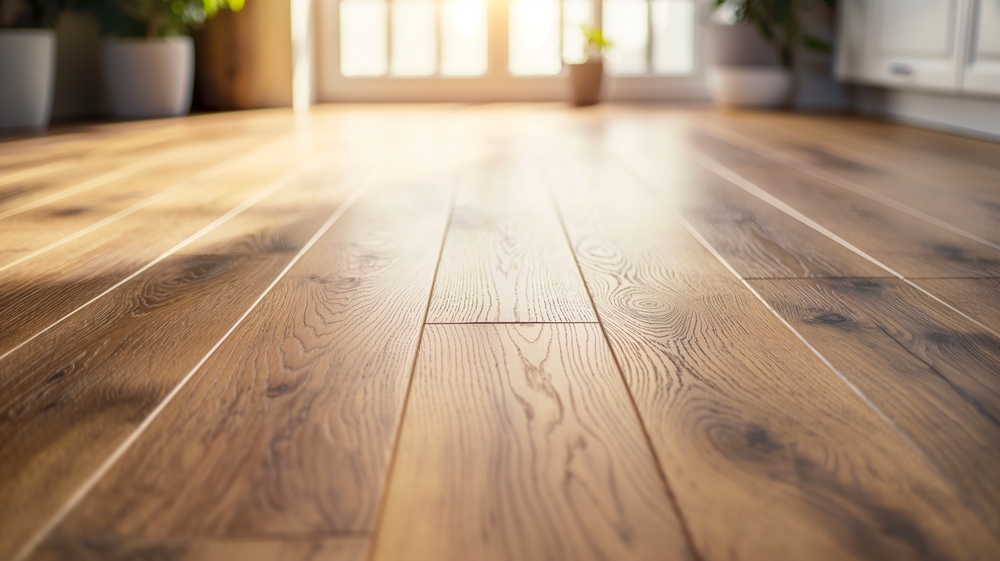How Long It Takes To Refinish Hardwood Floors

Refinishing hardwood floors is an excellent way to breathe new life into a room. Whether you want to restore the beauty of an aging floor or refresh the look of a recently installed surface, hardwood floor refinishing can help preserve the natural beauty and increase the lifespan of your flooring. However, one of the most common questions homeowners have before committing to this process is: how long does it take to refinish hardwood floors?
Understanding the timeline for refinishing hardwood floors is crucial to help you plan the project effectively, minimize disruptions to your daily routine, and manage expectations. The time required for the process depends on several factors, including the size of the area, the condition of the floor, the refinishing method used, and whether you hire professionals or attempt a DIY approach. This guide will walk you through these considerations and offer an overview of what to expect from the refinishing process.
The Process of Refinishing Hardwood Floors
Before diving into how long hardwood floor refinishing will take, it’s essential to understand the general steps involved. Refinishing hardwood floors typically involves a multi-step process that prepares the surface for sanding, staining, and sealing. Here is an outline of the stages in the refinishing process:
-
Preparation: The area must be cleared of furniture and other objects. Any existing furniture, rugs, or debris should be removed from the room. Professional refinishing companies may also protect the surrounding walls, baseboards, and other surfaces to avoid damage during the sanding process.
-
Sanding: This step is one of the most time-consuming and physically demanding parts of refinishing. Sanding removes the top layer of the wood to eliminate imperfections, scratches, and old finishes. It also opens up the wood to accept the new finish. Depending on the size of the area and the type of sanding equipment used, this can take several hours to a full day.
-
Staining (optional): After sanding, the floor may be stained to enhance its color and appearance. If you choose to stain the floor, it will need to dry thoroughly before moving on to the next step. This can add additional time to the process, depending on the specific stain and the humidity levels in the room.
-
Sealing/Finishing: The final step is to apply a protective coating over the wood. This can be polyurethane, oil, or other finishing products. The finish is what gives the floor its final look and provides protection against wear and tear. Depending on the type of finish and the number of coats applied, the drying time between coats may vary.
While the steps may sound straightforward, the time involved in each one varies based on several factors. Let’s take a closer look at those factors to determine how long it takes to refinish hardwood floors.
Key Factors That Affect Refinishing Time
Several factors contribute to how long it will take to refinish your hardwood floors. These variables play a significant role in the timeline of the project, and understanding them can help you better plan for the work ahead.
Size of the Area
The size of the area being refinished is one of the most important factors in determining how long the project will take. Refinishing a small room will generally take less time compared to larger areas like an open floor plan or a multi-room home. For instance, refinishing 100 to 300 square feet of hardwood flooring can take anywhere from 1 to 3 days, while larger areas may extend the timeline to 5 days or more.
Keep in mind that the time for sanding alone increases with square footage. As the space grows, more time is required for thorough sanding to ensure an even surface before applying the finish. Additionally, larger floors may require more coats of finish to achieve the desired appearance.
Condition of the Floor
The condition of your hardwood floor will also impact the amount of time required to complete the refinishing process. Floors with heavy scratches, stains, or wear and tear require more extensive sanding to restore them to their former glory. For example, if the floor has deep gouges or multiple layers of old finish, the sanding process will be more involved, potentially adding hours or even a day to the timeline.
Additionally, hardwood floors with substantial damage may require repairs before refinishing can begin. This could include replacing damaged boards or fixing gaps. Repairing the floor first can increase the total time required for the project, sometimes extending the overall timeline by a few extra days.
On the other hand, floors in better condition will require less sanding and may need fewer coats of finish, reducing the overall time commitment.
Refinishing Method
The method you choose for refinishing your hardwood floors can significantly impact the time it takes to complete the project. Generally, there are two primary methods for refinishing: traditional sanding and finishing, and more modern alternatives like dustless sanding or using a chemical refinishing kit.
-
Traditional Sanding: Traditional sanding, often done with large sanding machines, can take longer because it involves sanding down the entire surface of the floor. The process also creates a significant amount of dust, which means the area will need extra time for cleaning and preparation before moving on to the next stages.
-
Dustless Sanding: As an alternative, dustless sanding methods have become increasingly popular. While dustless sanding uses specialized equipment to minimize the dust created, it can still take a similar amount of time as traditional sanding, depending on the space size. However, it may result in a cleaner environment, which could reduce cleanup time after the project is finished.
-
Chemical Refinishing Kits: These are faster than traditional sanding and can sometimes be done in a single day. Chemical refinishing involves using specific products that strip and clean the floor’s surface before applying a new finish. While this method saves time, it may not be as effective at restoring heavily worn or damaged floors.
The method you choose for refinishing will impact both the time and the quality of the result. Traditional sanding tends to take more time but provides a more thorough and professional finish, especially for older or worn floors. If you’re looking for a quicker fix and are satisfied with a less intense restoration, chemical refinishing might be a better fit.
Professional vs. DIY
Another critical factor that affects the timeline is whether you decide to hire professionals or take the DIY route. Professional hardwood floor refinishing companies have the necessary equipment, expertise, and experience to complete the project much faster than the average homeowner. They also know how to handle tricky situations, such as large surface areas or damaged floors, which could cause delays for a novice.
If you hire professionals, expect the project to take anywhere from 2 to 5 days, depending on the size of the area, condition of the floor, and the type of refinishing method used. Professionals can typically work efficiently, completing each step with the right tools and techniques.
On the other hand, if you choose to refinish the floors yourself, the timeline will likely be longer. DIY refinishing may take anywhere from a few days to a week, especially if you lack experience or the necessary equipment. DIYers may also take more time between coats of finish to ensure they’re properly applying the product.
Drying and Curing Times
Once the sanding, staining, and sealing are completed, the floor will need adequate time to dry and cure. The drying time depends on the type of finish used. For instance, water-based polyurethane finishes generally dry faster than oil-based finishes, which can take 6 to 8 hours between coats, whereas oil-based finishes might require up to 12 hours between coats.
Additionally, the curing time—the time it takes for the finish to harden completely—can take up to 30 days, depending on the conditions and type of finish. While the floor may feel dry to the touch after a few hours, it’s important to avoid walking on the floor for at least 24 to 48 hours after the final coat is applied to allow the finish to set properly.
Conclusion
Refinishing hardwood floors is a fantastic way to revitalize your space, but the amount of time it takes depends on several factors. The size of the area, the condition of the floor, the method of refinishing, and whether you hire professionals or take the DIY route all play key roles in determining how long the process will take.
On average, refinishing hardwood floors can take anywhere from 2 to 5 days for professionals, and up to a week or more for a DIY project. The process involves multiple stages, including preparation, sanding, staining, and finishing, with drying and curing times adding to the total duration. When planning your hardwood floor refinishing project, consider these factors and make sure to allow for proper drying times to ensure the best results.
By understanding the timeline and steps involved in refinishing hardwood floors, you can approach the project with confidence and avoid surprises. Whether you’re looking to refresh an old floor or restore a cherished hardwood surface, refinishing can breathe new life into your home and provide long-lasting results.

